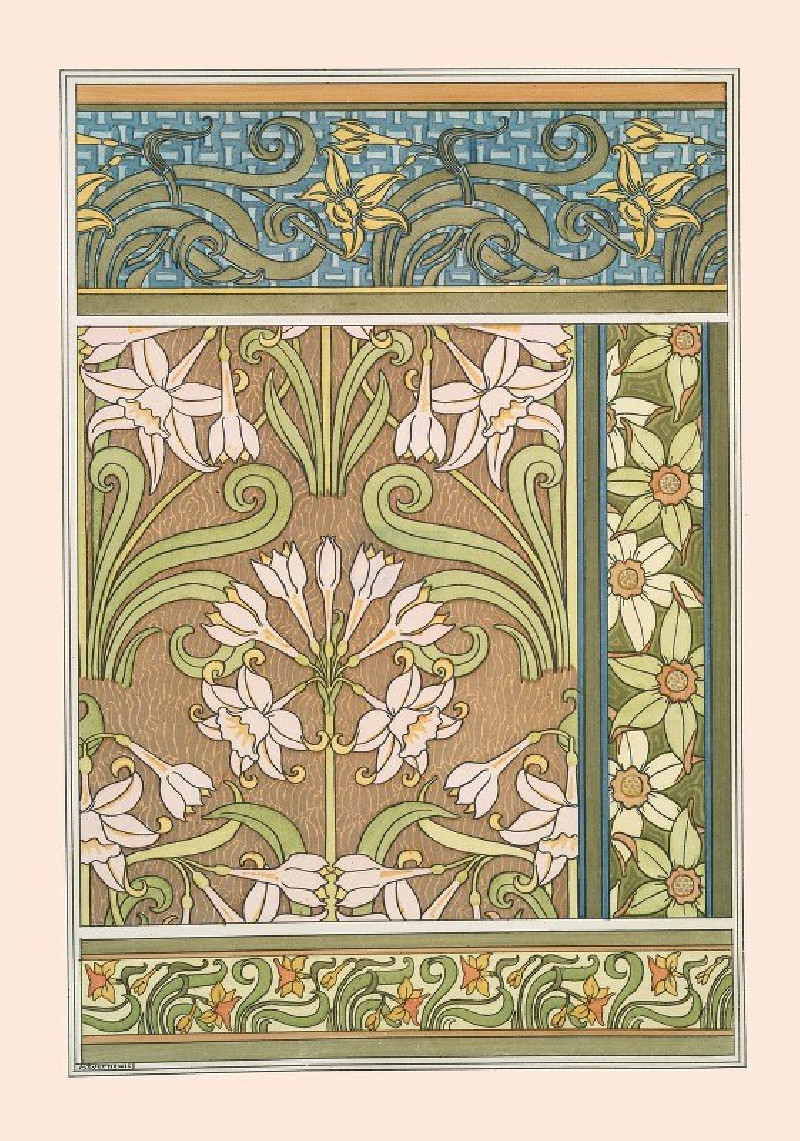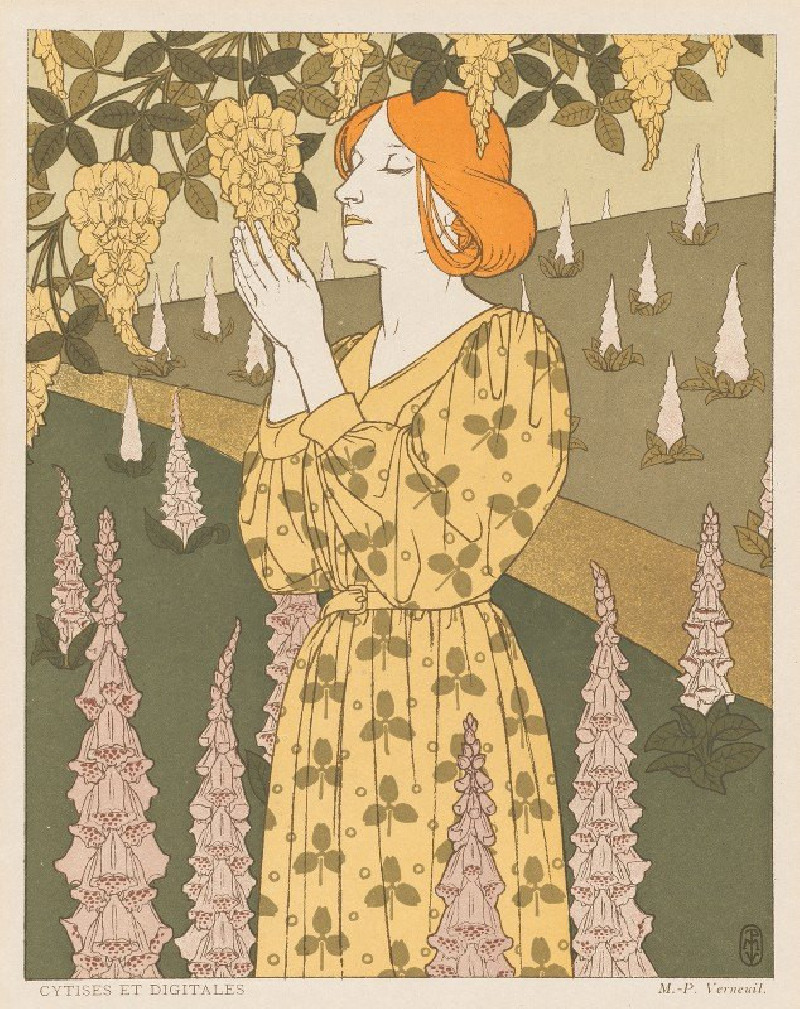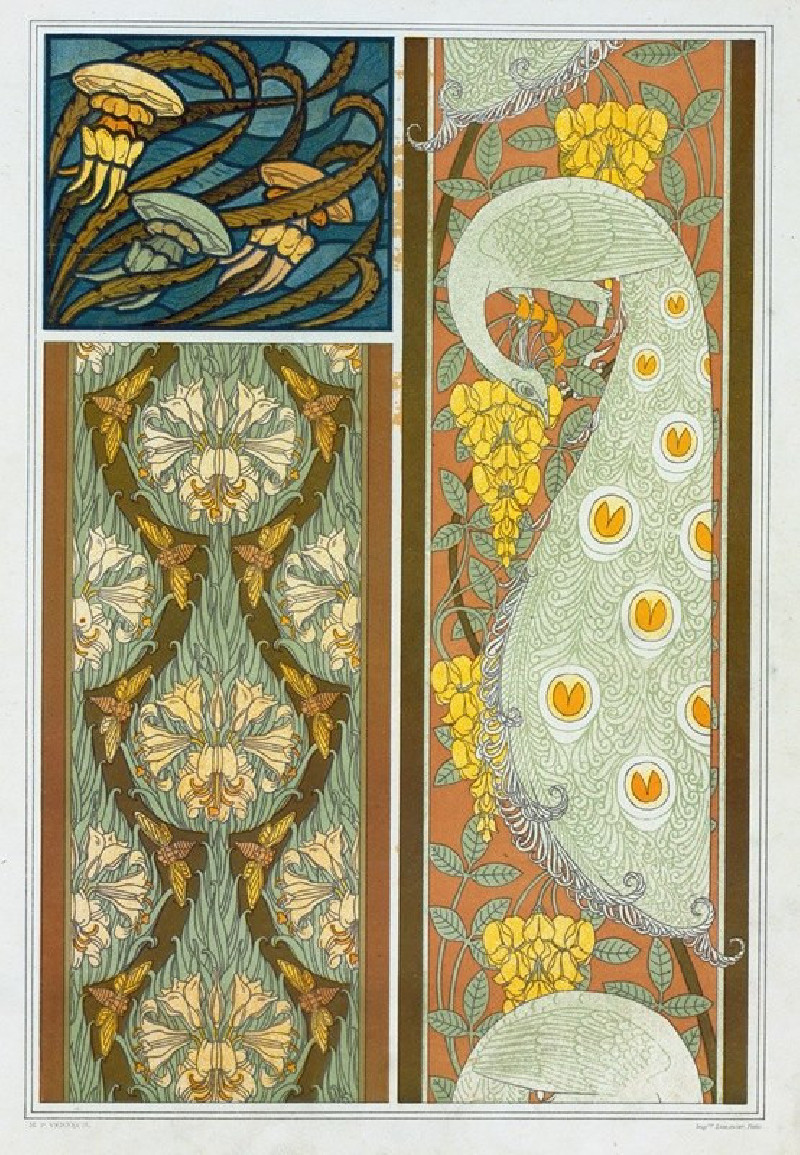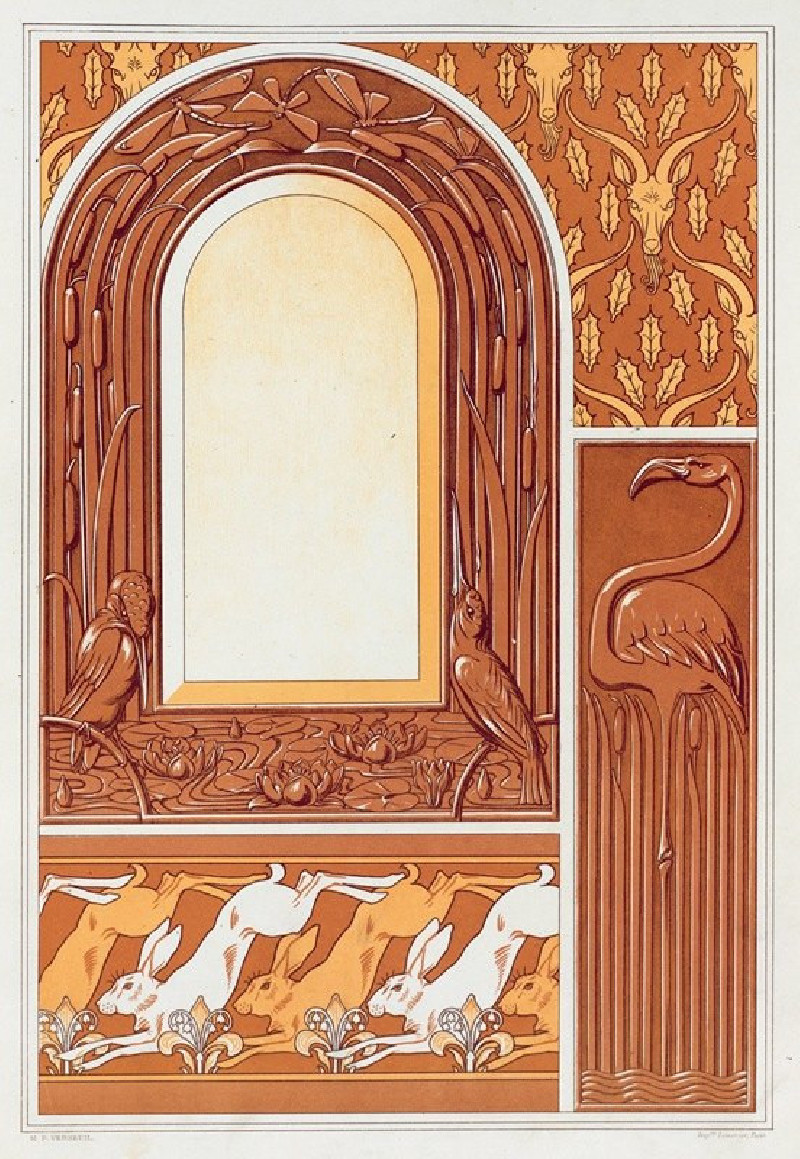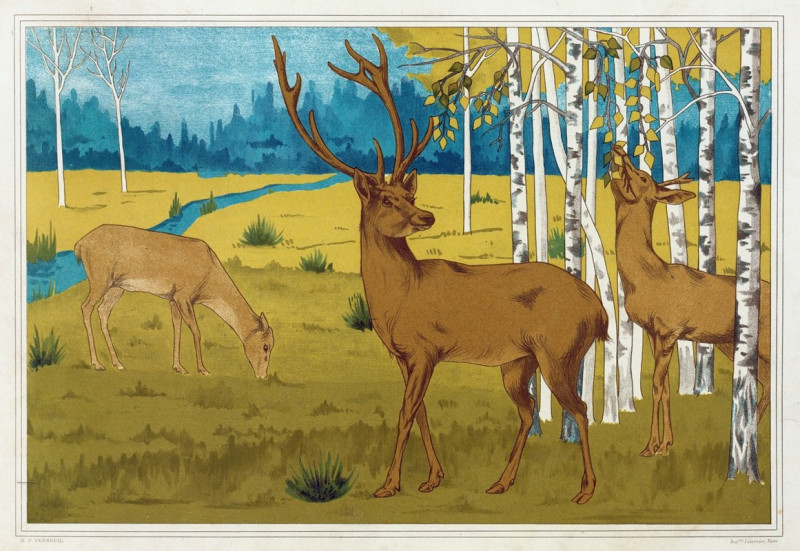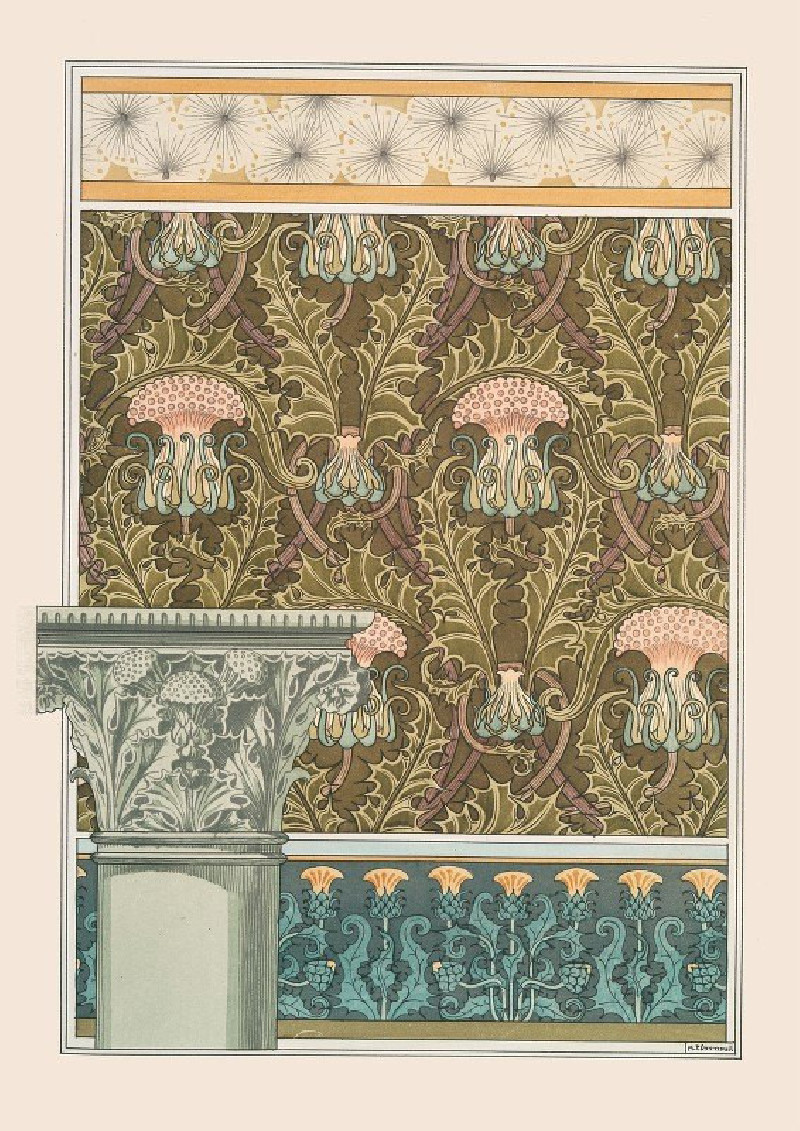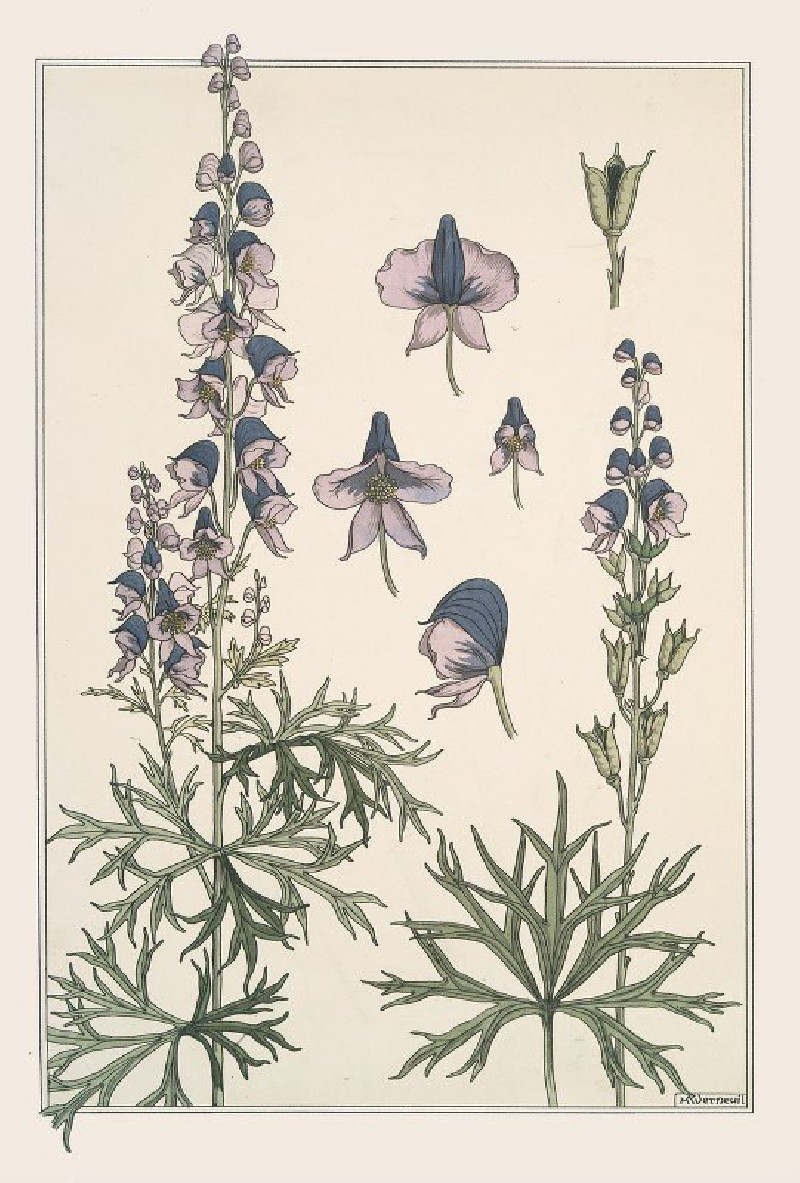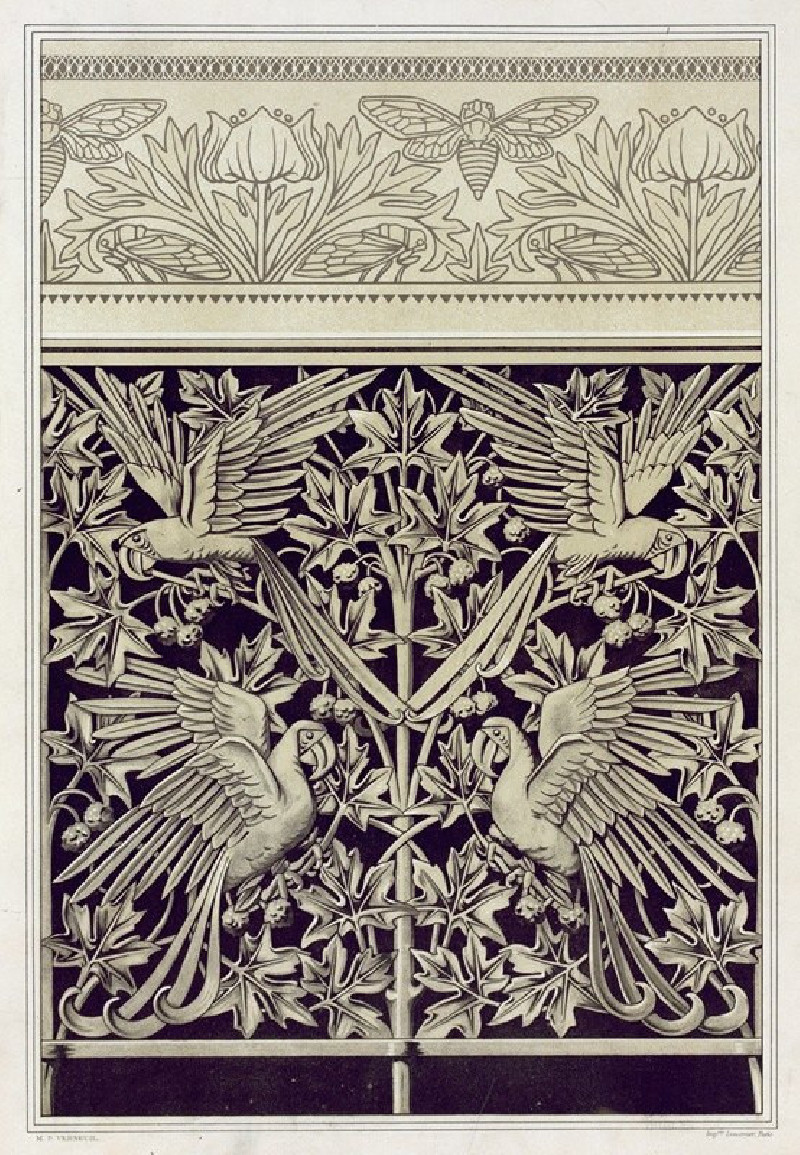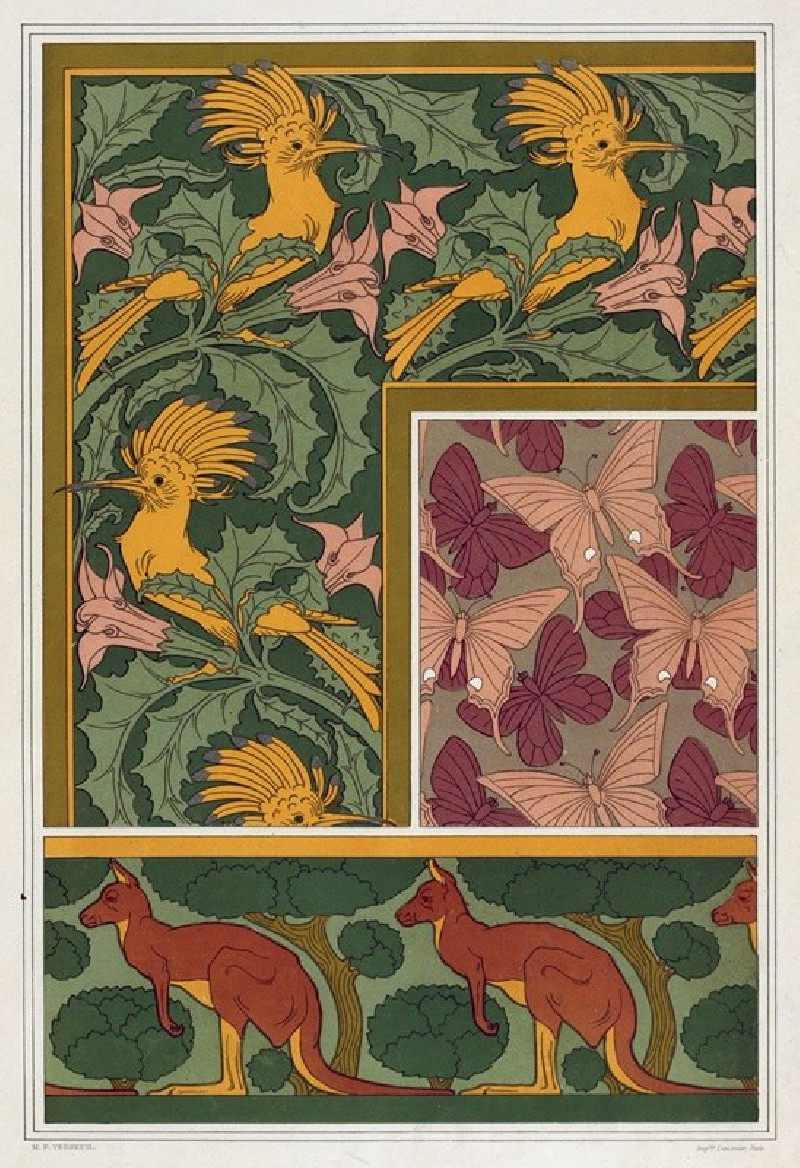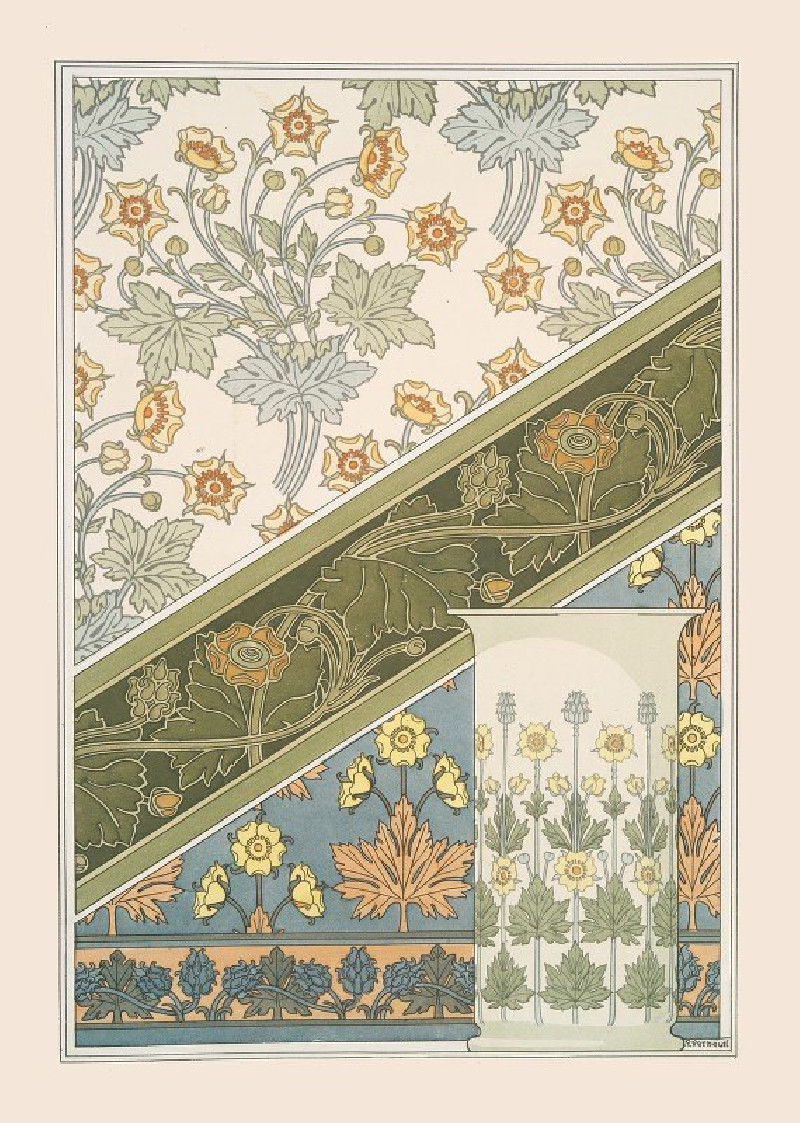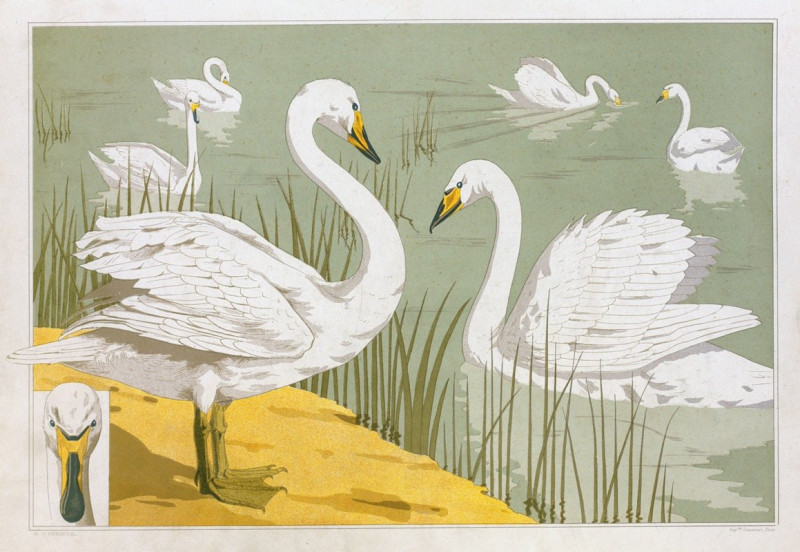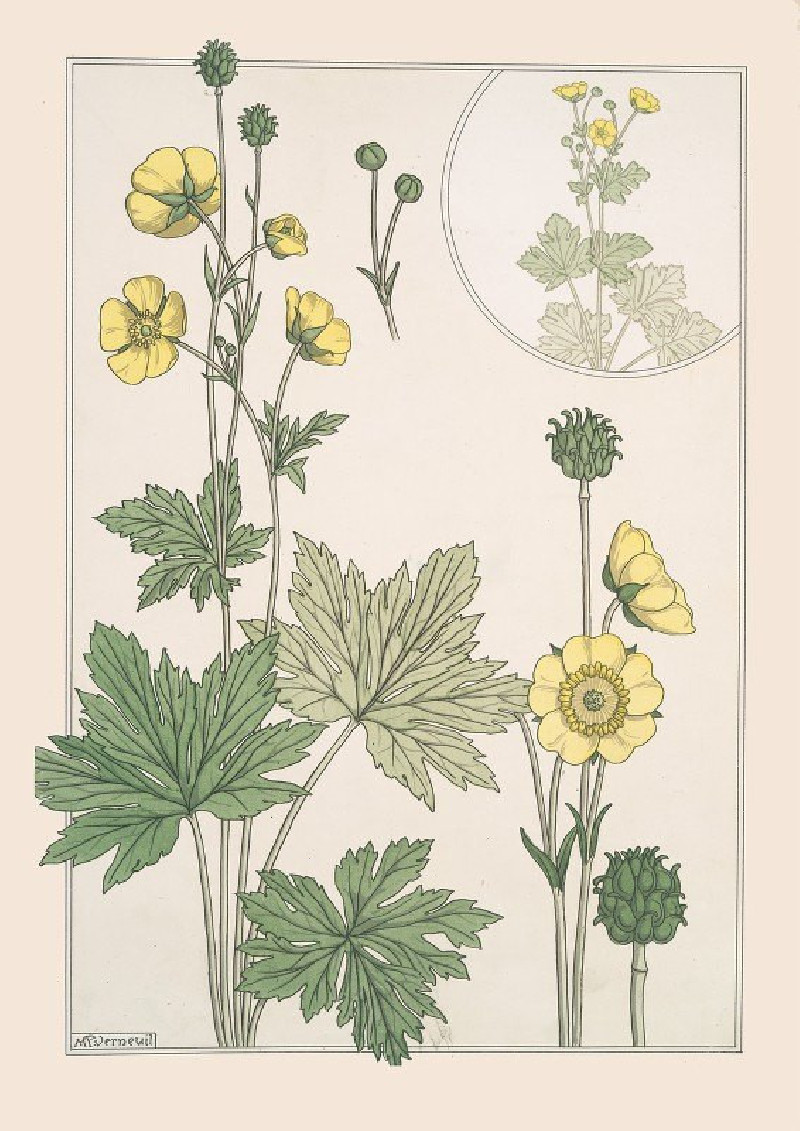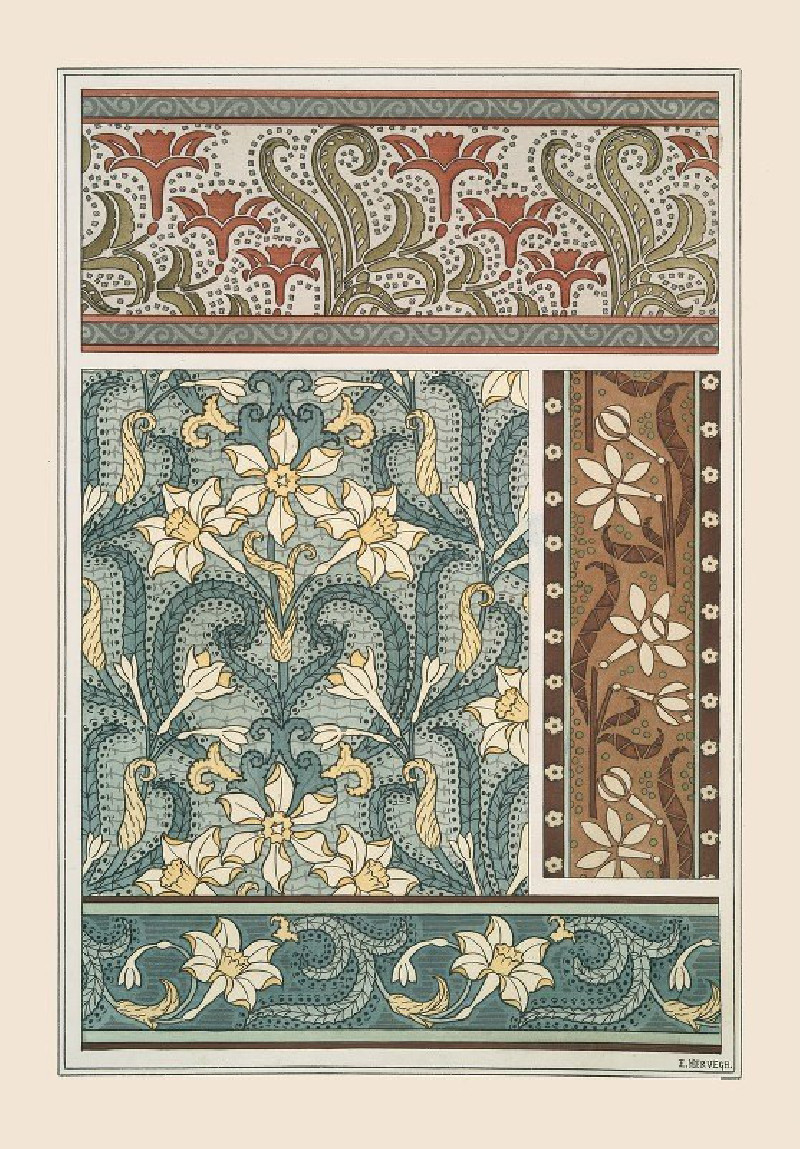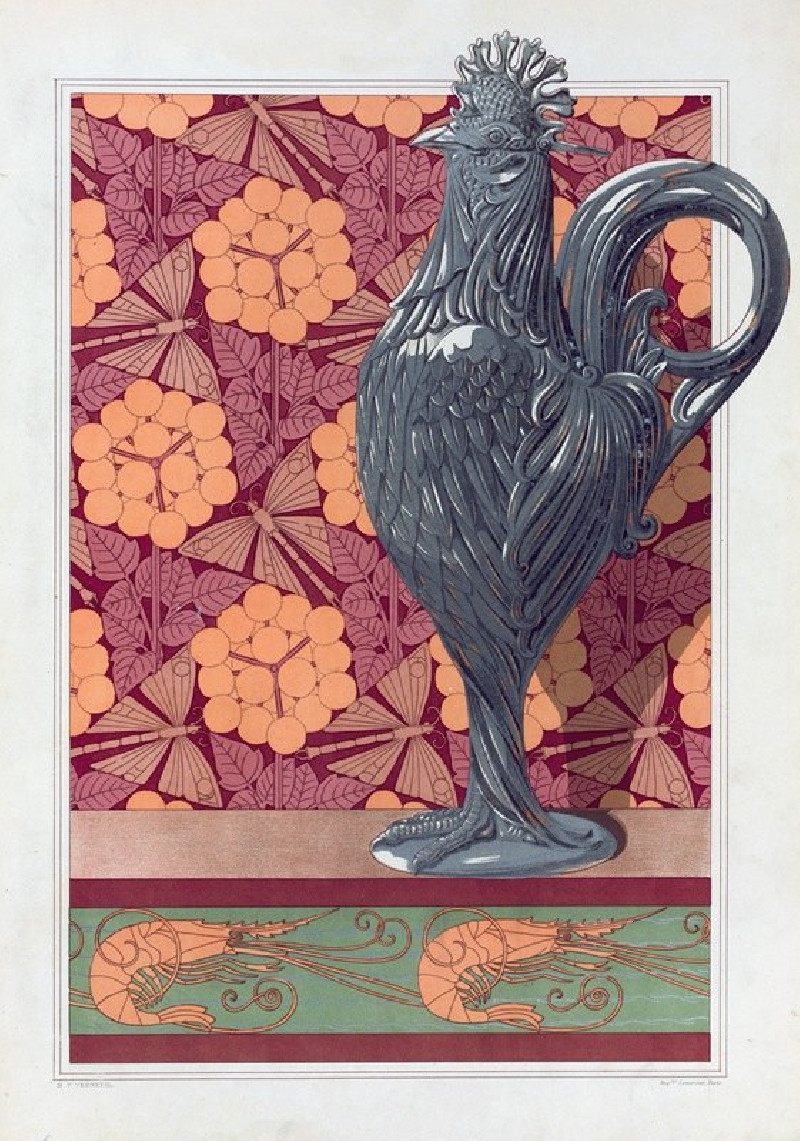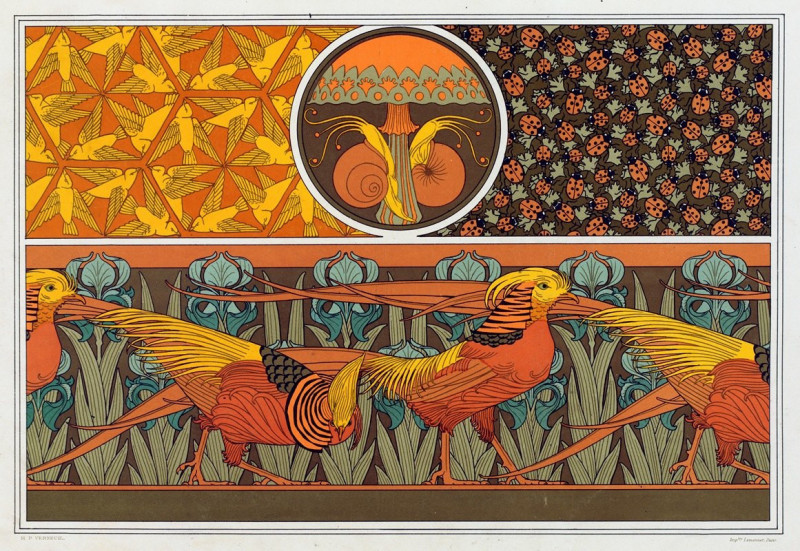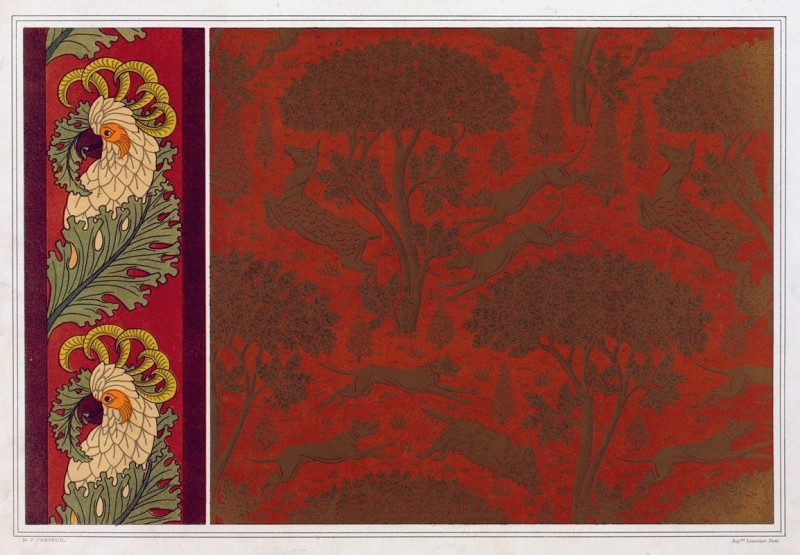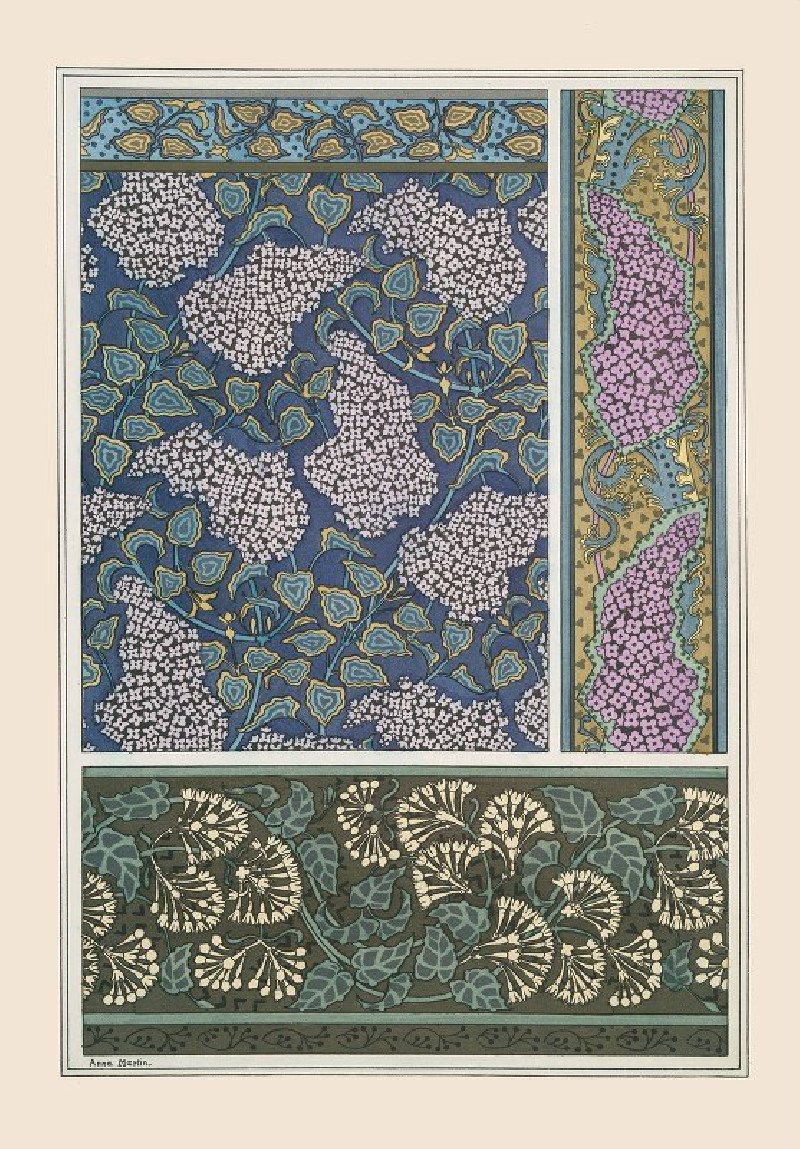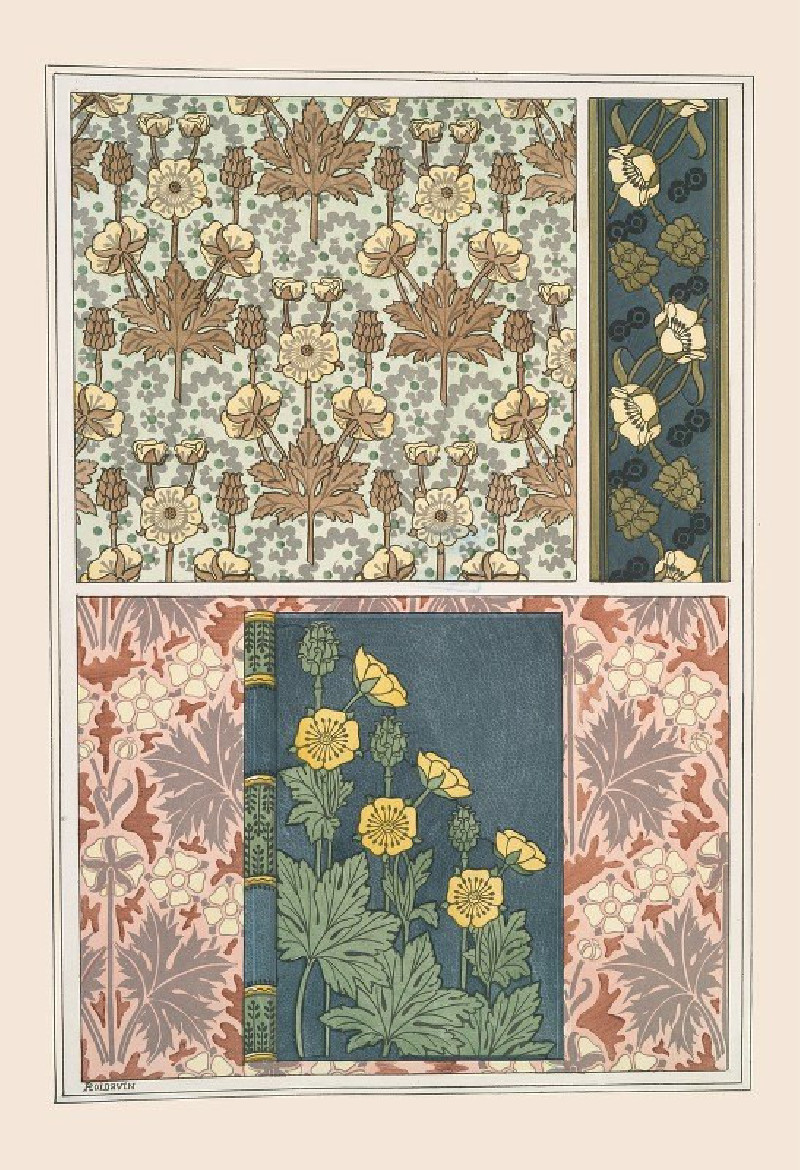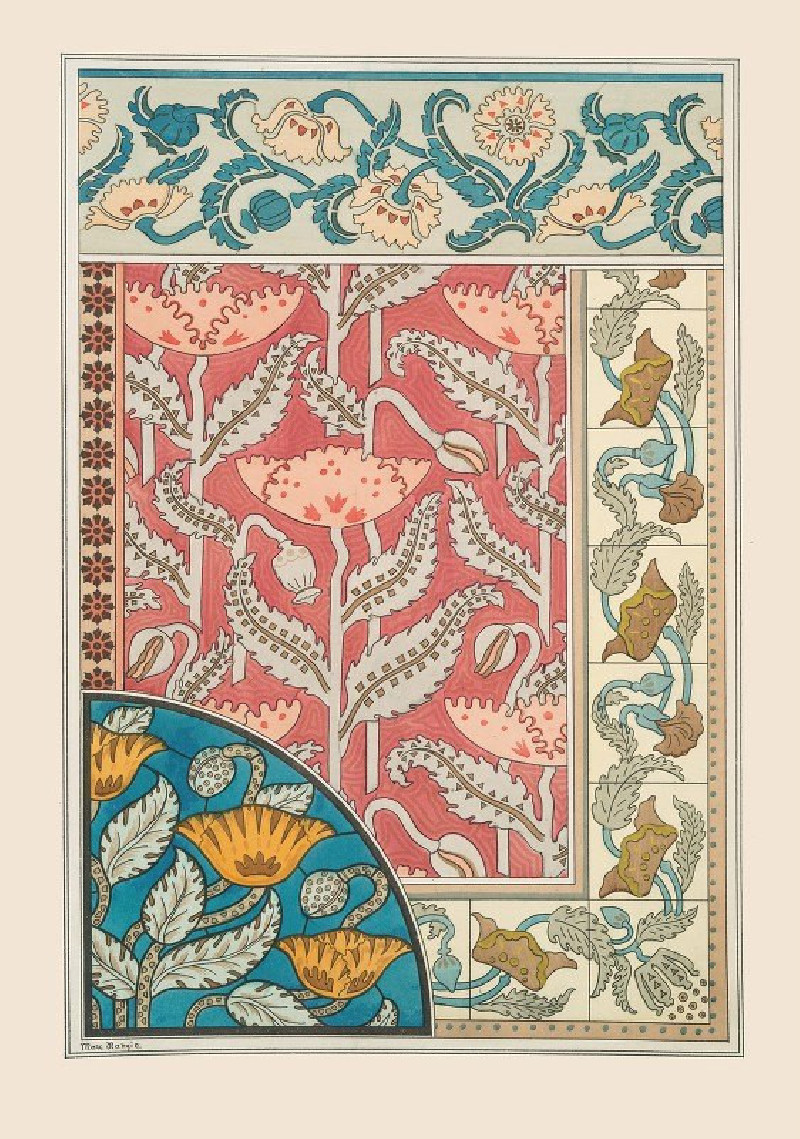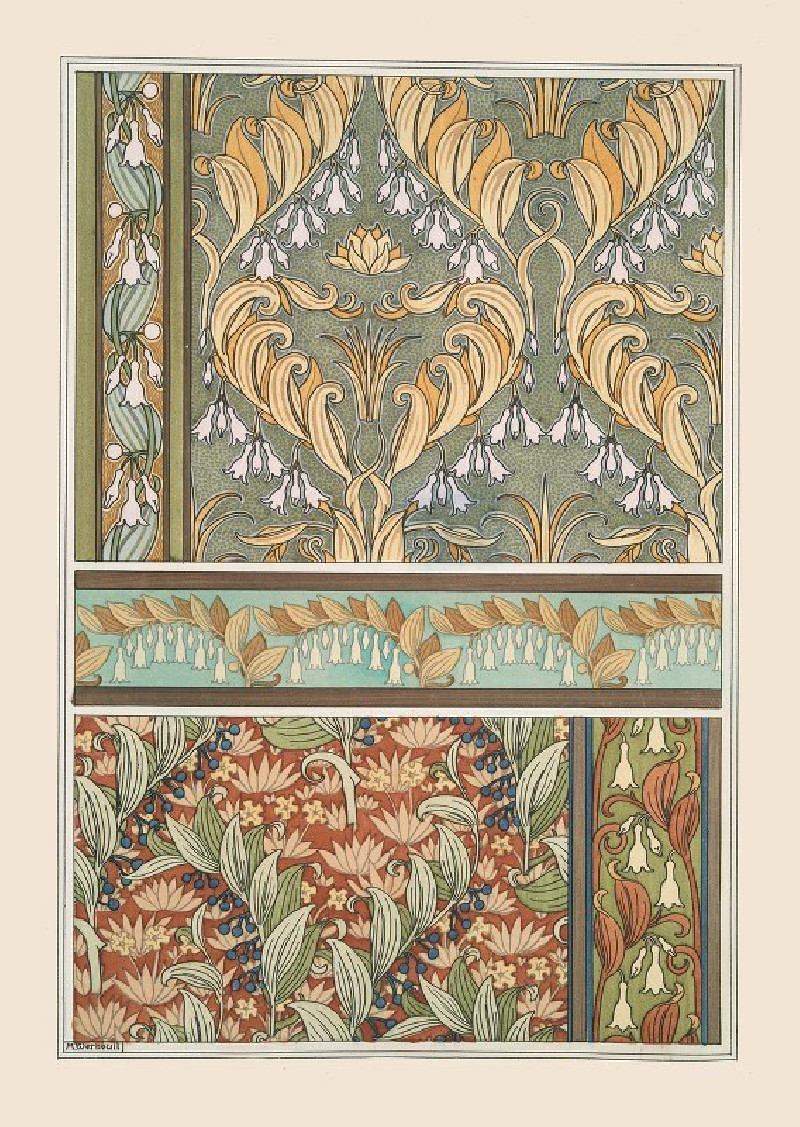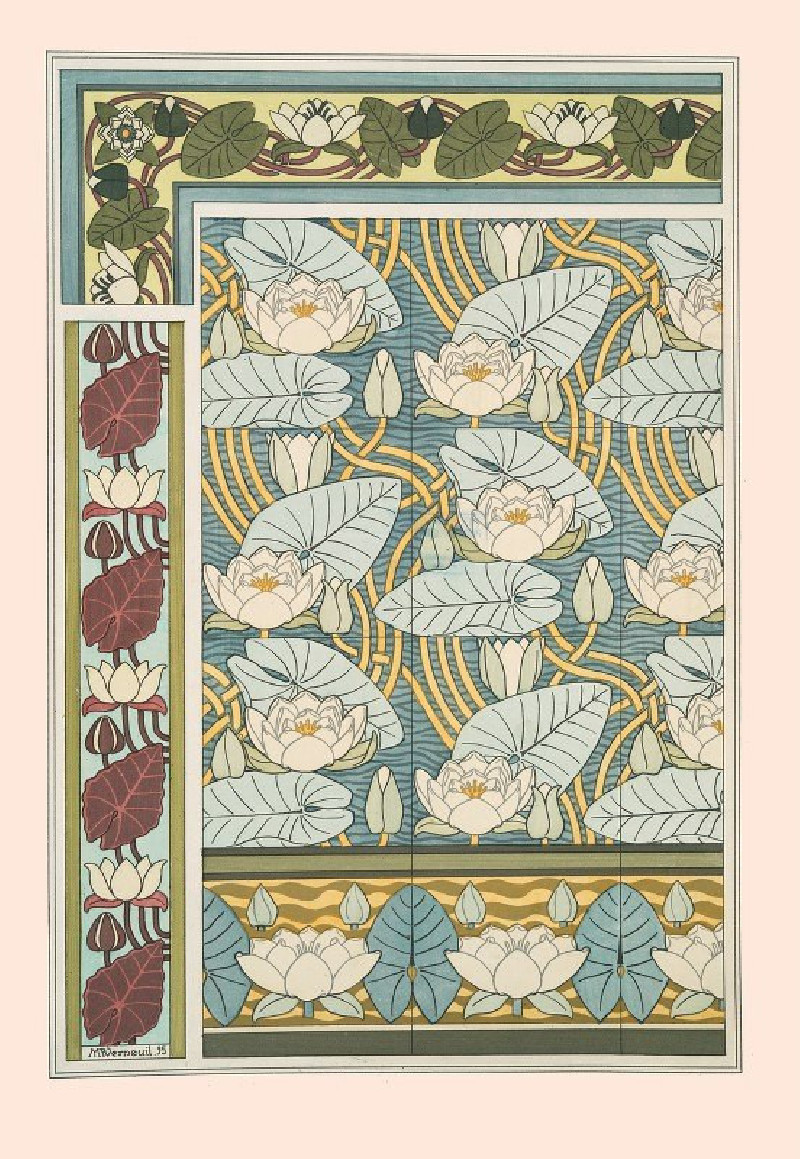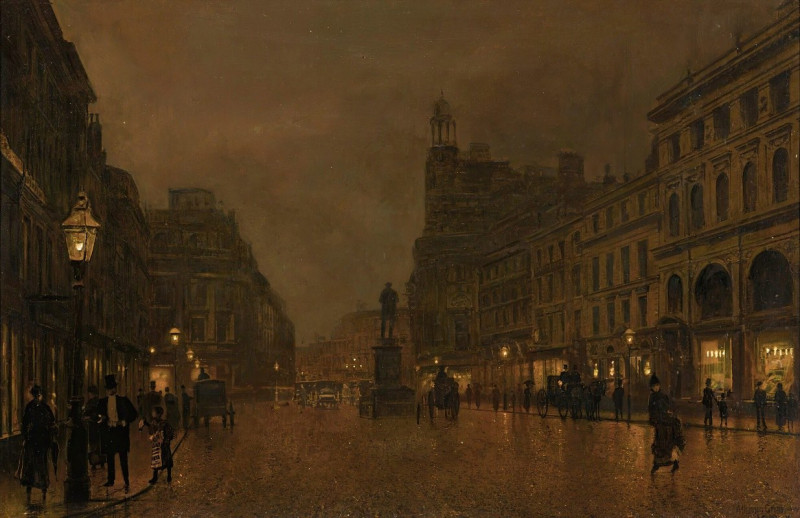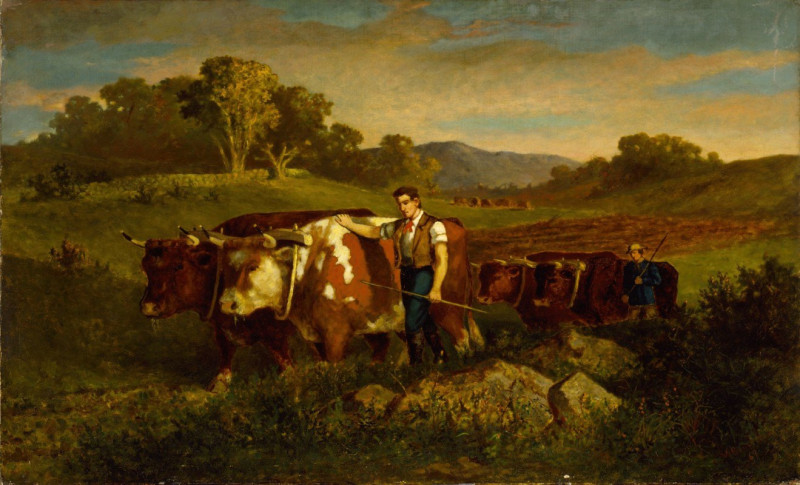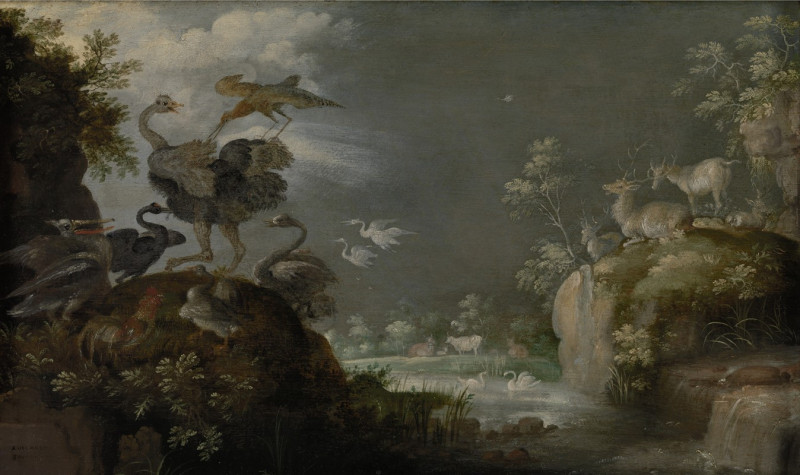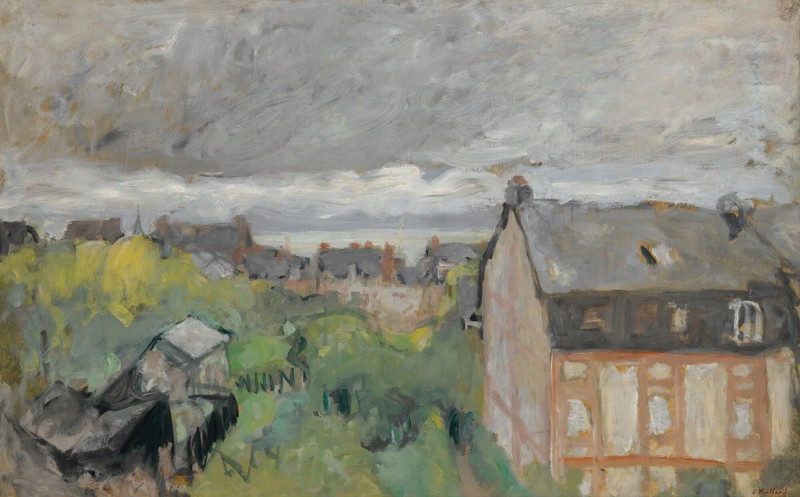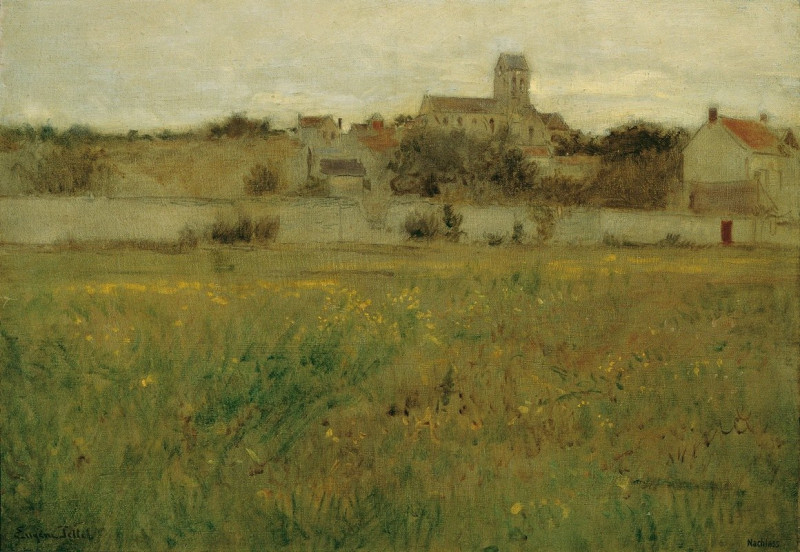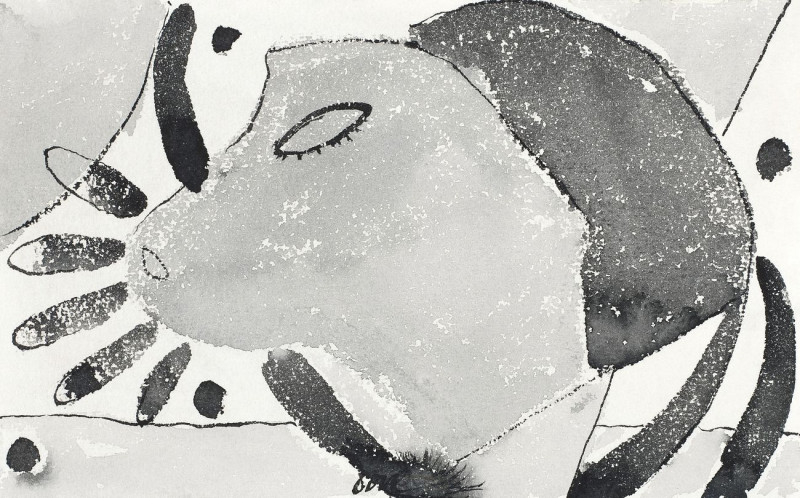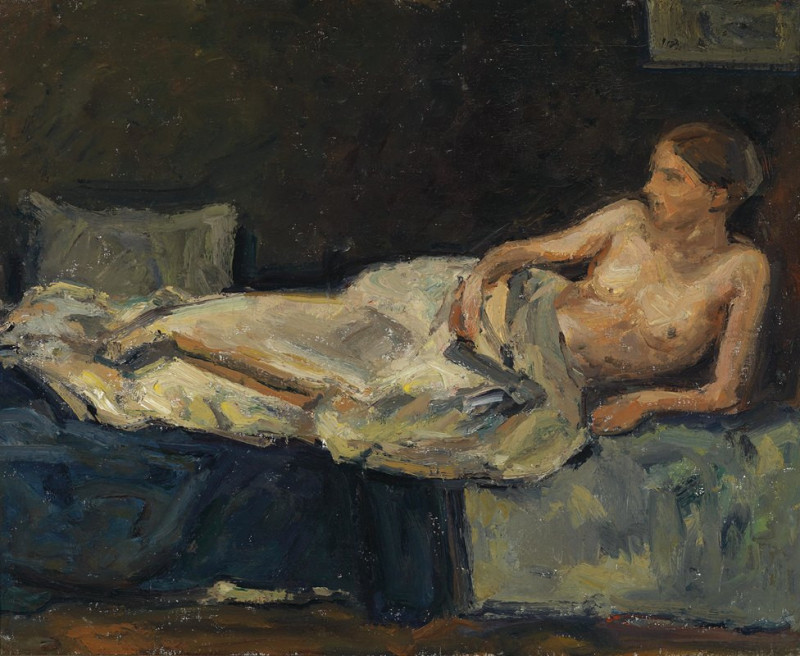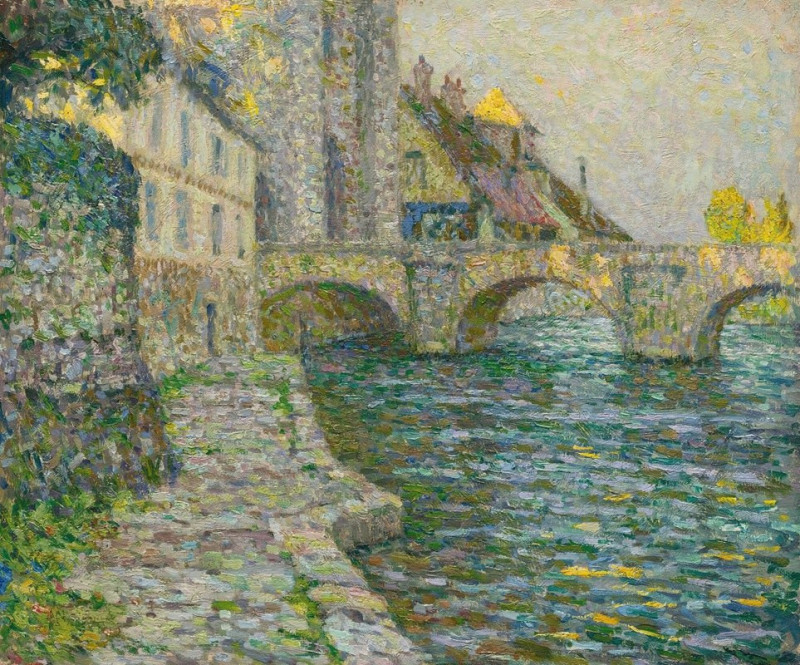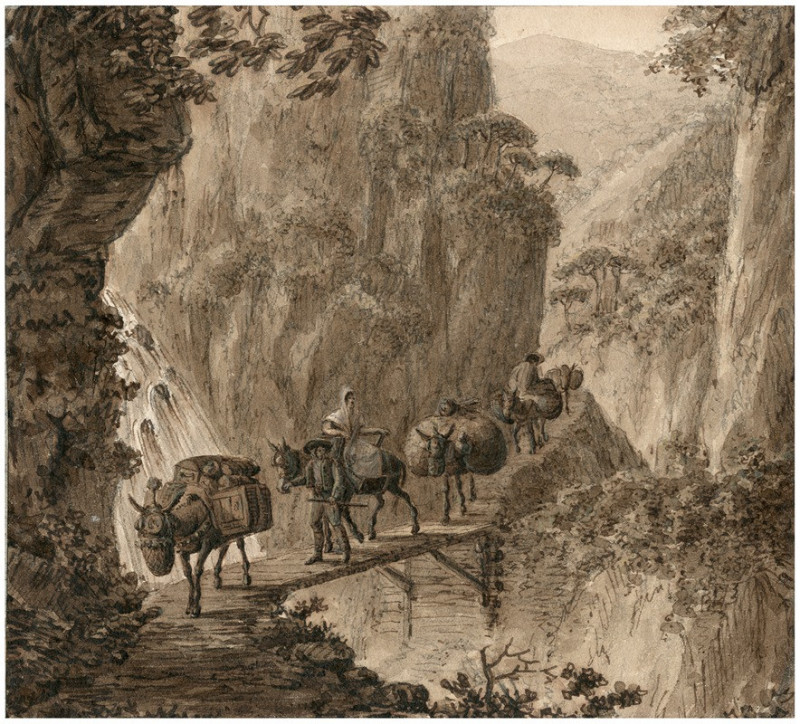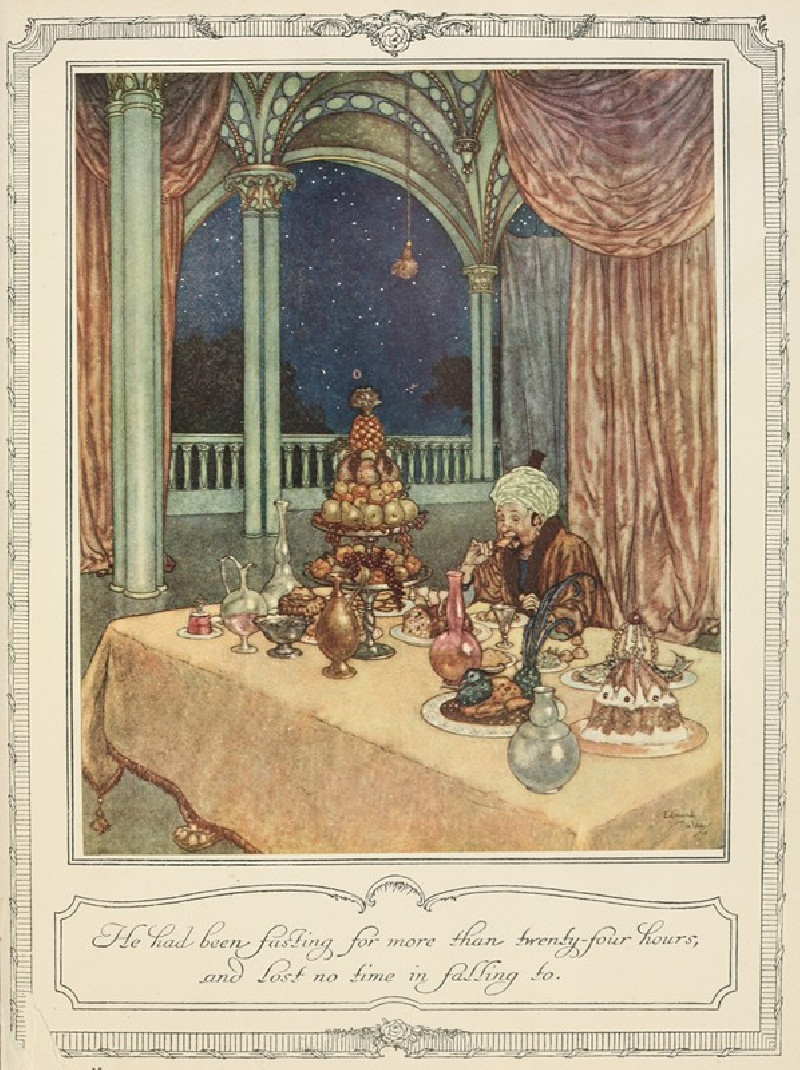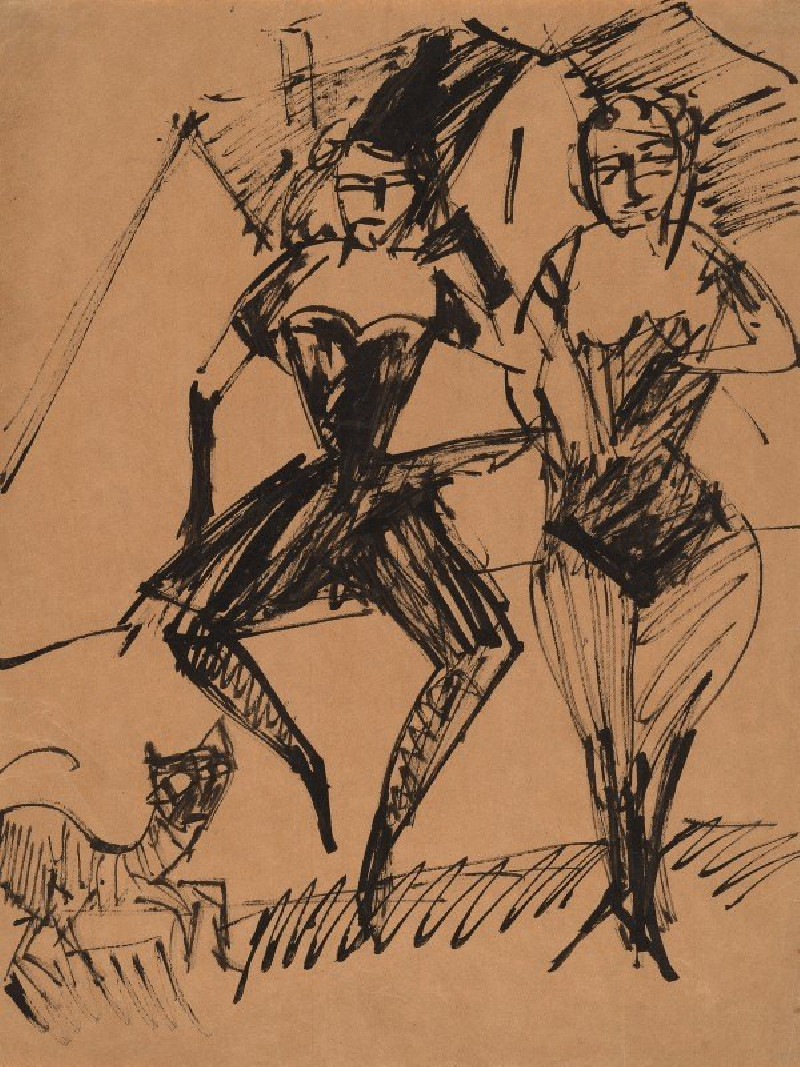Jonquille 2 (1896)
Technique: Giclée quality print
Recommended by our customers
More about this artwork
Delve into the enchanting world of "Jonquille 2" by Maurice Pillard Verneuil, a remarkable artwork from 1896 that showcases the exquisite artistry and influence of the Art Nouveau movement. This painting is a visual celebration of natural forms, harmoniously integrated with stylized decorative elements.At the heart of the painting, a lush arrangement of white daffodils, detailed with delicate shades of white and subtle yellow at their centers, stands prominently. These flowers, known for symbolizing rebirth and new beginnings, beautifully fan out from a central point, suggesting a sense of unity and natural order. The background, textured like a tapestry, complements the organic motif with its earthy brown tones, enhancing the vibrancy of the daffodils as they elegantly reach upwards.Surrounding the central floral display are meticulously designed border panels that are equally captivating. The top and bottom sections feature intricate patterns of interlacing foliage and daffodils, rendered in calming hues of green, yellow, and blue. The side panel juxtaposes this arrangement with a vertical display of long, narrow leaves and circular flowers, emphasizing a contrast that is both rhythmic and soothing."Jonquille 2" not only exemplifies Verneuil's mastery of color and form but also embodies the spirit of Art Nouveau, where the boundaries between art and nature are harmoniously blurred. Each element within the piece is imbued with a sense of purpose and aesthetics, making it a testament to the timeless beauty of natural forms reinterpreted through human creativity.
Delivery
Returns
Maurice Pillard Verneuil was a French artist and decorator in the Art nouveau movement. He was born in Saint-Quentin, France. Maurice Pillard Verneuil learned his trade from the Swiss designer Eugène Grasset. Maurice Pillard Verneuil then went on to become a well-known artist and designer. He was inspired by Japanese art and nature, particularly the sea. He is known for his contribution to the art deco movement and, in particular, his use of bold, floral designs in ceramic tiles, wallpapers and other furnishing textiles.

